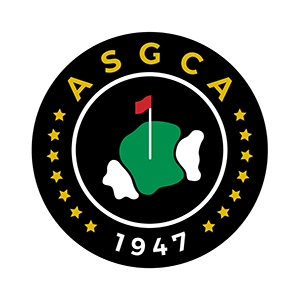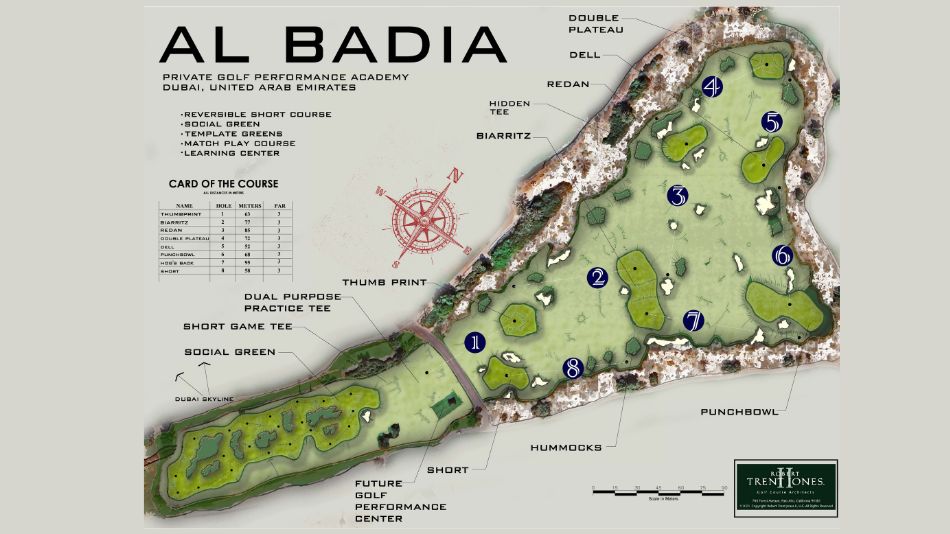Mike Gorman, ASGCA, and the team at Robert Trent Jones II Golf Course Architects have seen the recent opening of their unique design at Al Badia Golf Club in Dubai, United Arab Emirates. The new short course is reversible.
Golf Course Architecture reports:
The project came about as the driving range was being repurposed for another use. This led RTJ II to explore alternative locations for the facility, ultimately landing on a 11-acre barren parcel of land near the golf course.
“The site provided a blank canvas for our vision,” said Mike Gorman, senior architect at RTJ II. “The brief was to design a world-class, multi-purpose learning and performance academy. The facility needed to seamlessly function as both a traditional practice range and a short course, offering flexibility to suit different needs. Additionally, we designed a 30,000-square-foot Himalayas-style green, providing a fun, informal space for learning golf.
“We wanted to incorporate architecturally significant features that not only enhance the playing experience but also allow players to practice elements they might encounter on some of the world’s most renowned courses. For example, hole one features a thumbprint green, which adds a fun, strategic dimension while providing a unique opportunity to learn and engage with this classic design element.”
The course will also include Dell, Double Plateau, Punchbowl and Biarritz template features.
“The reversible layout was chosen to maximise flexibility and engagement, allowing the course to be played in multiple configurations, keeping it fresh and dynamic,” said Gorman. “While there’s an eight-hole ‘scorecard’ option, the real spirit of the facility is as a ‘choose-your-own-adventure’ short course. Players can decide their next hole based on who won the previous one, creating a more interactive and personalised experience.”
The course can be lit for evening play. “Lighting was a critical consideration, especially given Dubai’s climate,” said Gorman. “The positions of the lights were carefully planned to ensure optimal visibility without interfering with play. Lower-level contour lighting helps illuminate the course without poles interfering with the aesthetics.”

